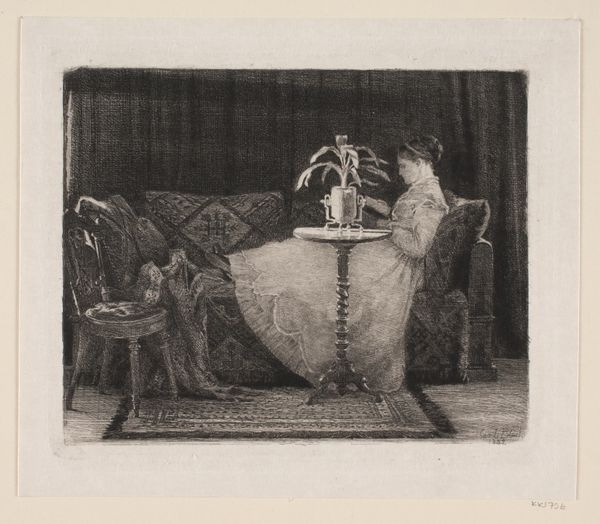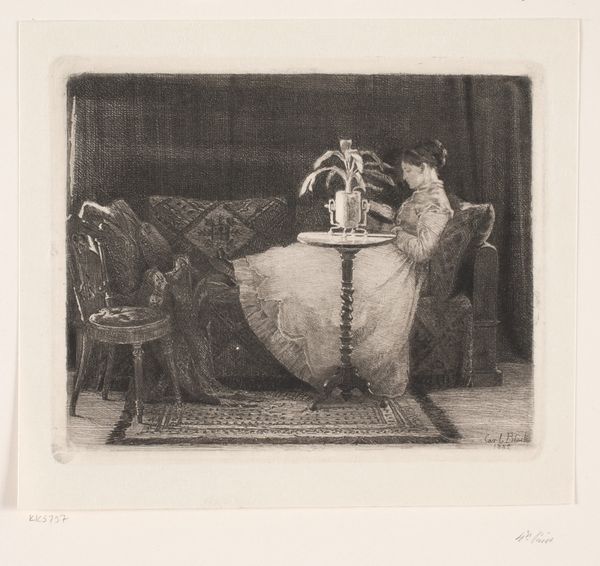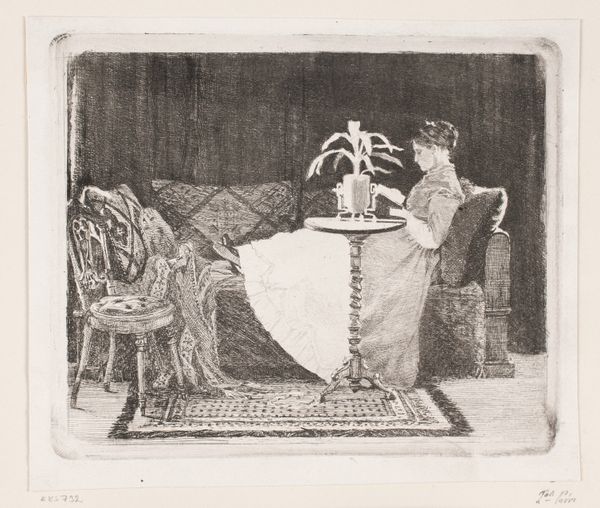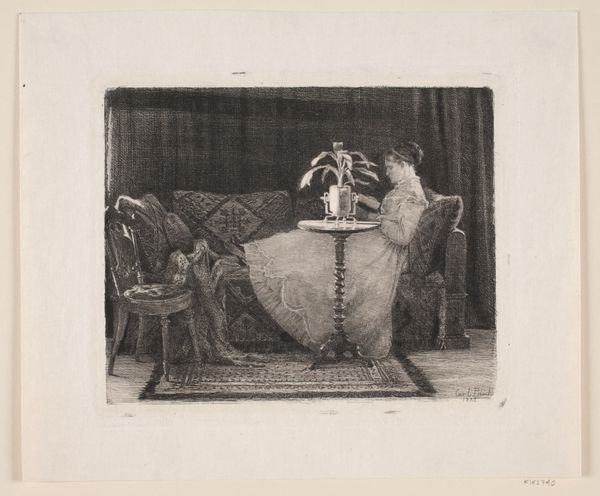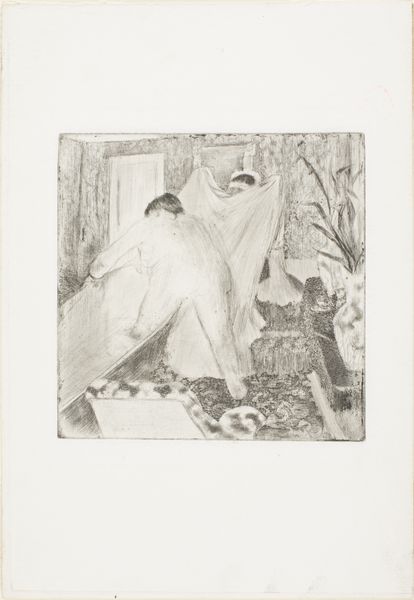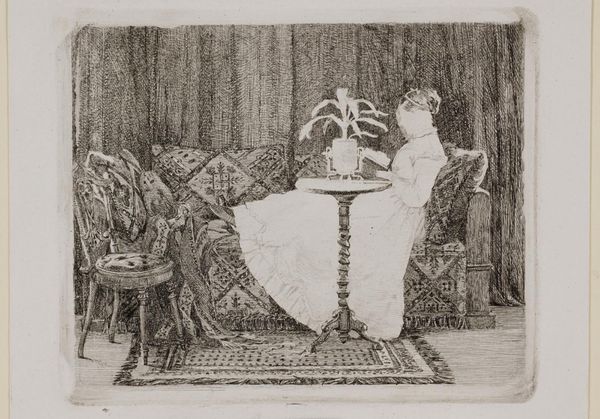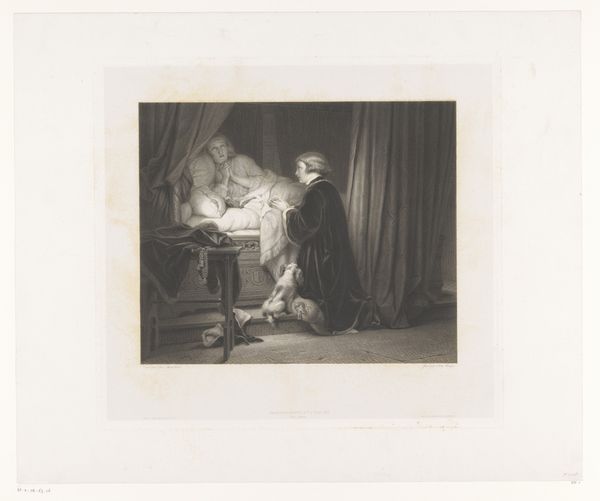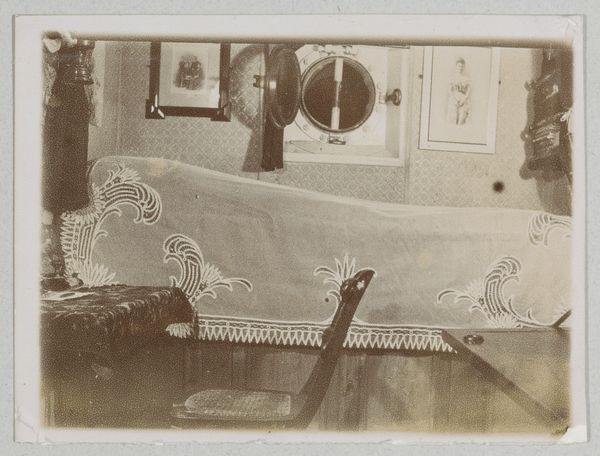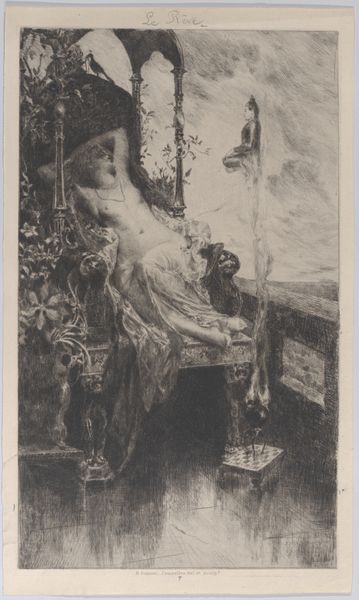
print, etching, intaglio
#
portrait
# print
#
etching
#
intaglio
#
19th century
#
genre-painting
Dimensions: 131 mm (height) x 160 mm (width) (plademaal)
Curator: Here we have Carl Bloch's "Læsende dame," created in 1882. It's an etching, part of the broader genre-painting movement. Editor: It evokes a certain hushed domesticity. The scene, rendered in delicate intaglio, features a woman reclining on a sofa, engrossed in a book. I am interested in how Bloch depicts that cultural expectation in the home. Curator: Yes, Bloch often explored such subjects. This piece utilizes etching to create an almost photographic realism, yet we must remember the context in which Bloch and other artists operate. We see here how the materials dictate, at least partially, the aesthetic choices and possibilities. Printmaking was experiencing something of a boom then, making works like this more accessible. Editor: Absolutely, this accessibility facilitated a wider distribution of imagery and ideals, thereby shaping the role of women and family within public discourse, don't you agree? Consider the setting too—the bourgeois interior acting as a stage for the enactment of social norms. The woman's very posture is suggestive of leisure and education; however, it also suggests women are consumers as their only available position in society. Curator: Precisely! And the tools themselves play a role here. The plate on which Bloch etched this design; the needle he used; the ink; all of it contributing to the ultimate product, and its availability, changing the role of what a work of art should communicate, democratizing the image, as it were. He would need a high understanding of metal to render such precision through material selection and artistic skills, moving it toward popular acceptance. Editor: I concur that her contemplative pose could be interpreted on numerous levels. Furthermore, the very act of portraying it on such a scale implies its public relevance, inviting audiences to examine and potentially emulate such examples of cultured behavior and aesthetic enjoyment of gender expectations. This print and others were disseminated for a purpose. Curator: And its creation had impact too: imagine the craftsman creating it. It gives great meaning when analyzing the social contexts within the artistic community, shifting focus onto working conditions and economic factors affecting art’s circulation. Editor: It prompts reflections on domesticity's role and how gender ideals influenced social perceptions and what constitutes the domestic bliss narrative. Curator: Exactly, seen in that light, the work takes on a new level of depth, showcasing not only the artistic choices but the socio-economic context of its creation.
Comments
No comments
Be the first to comment and join the conversation on the ultimate creative platform.
